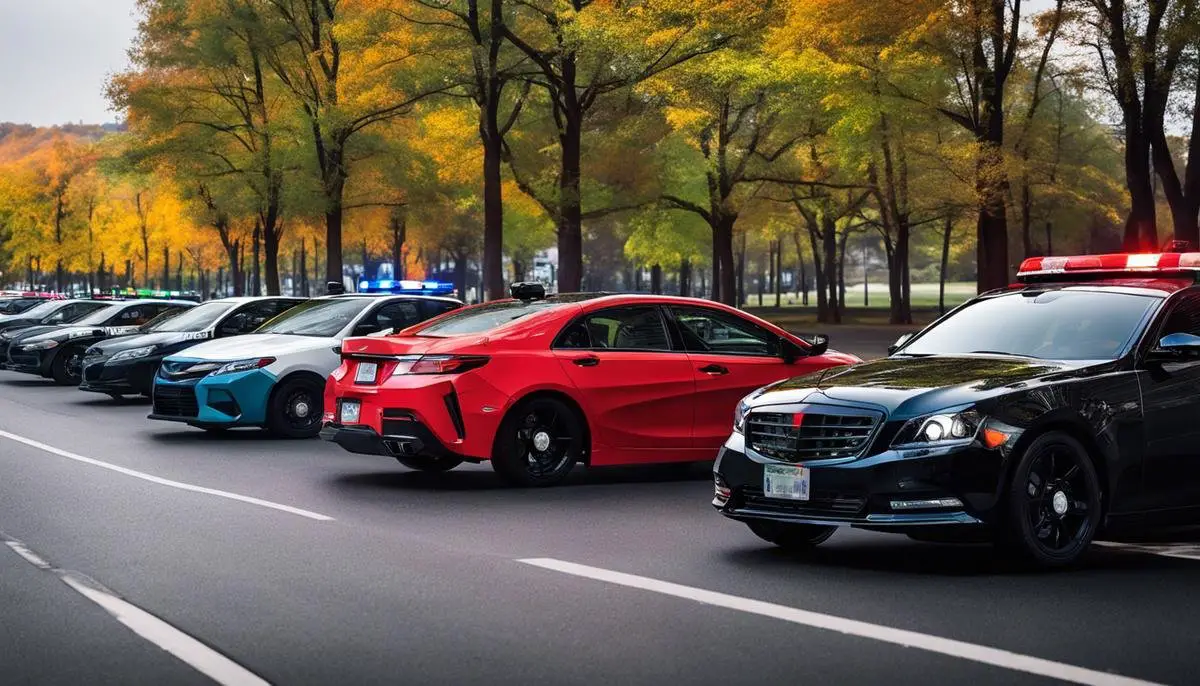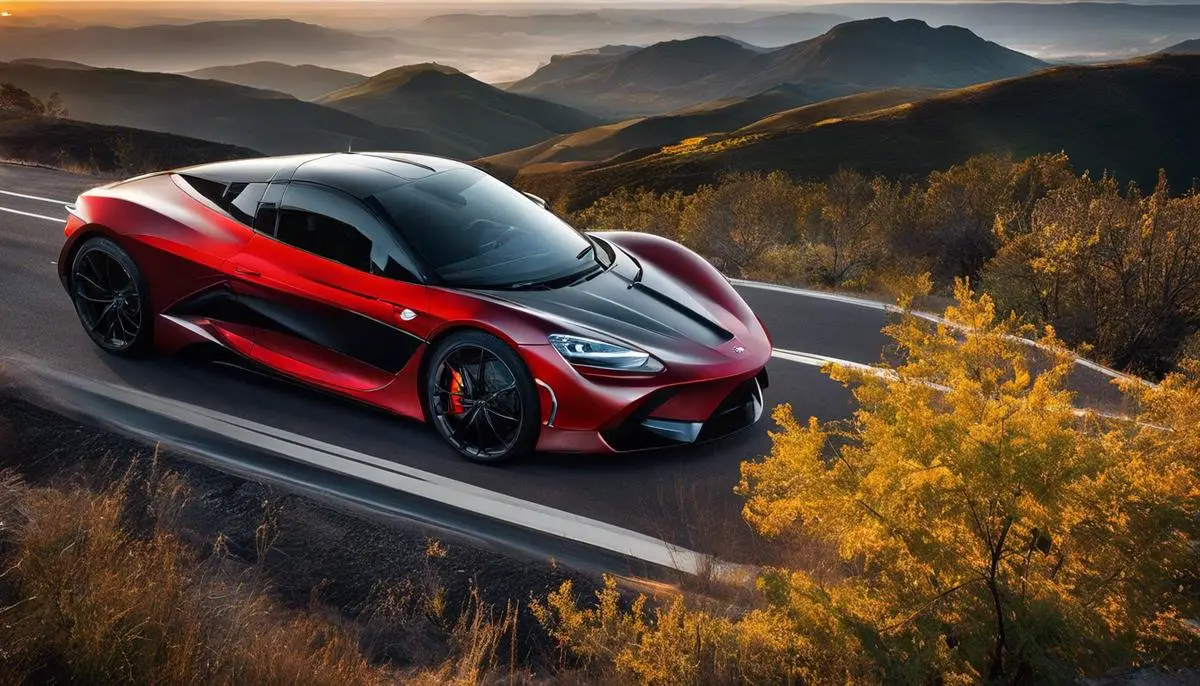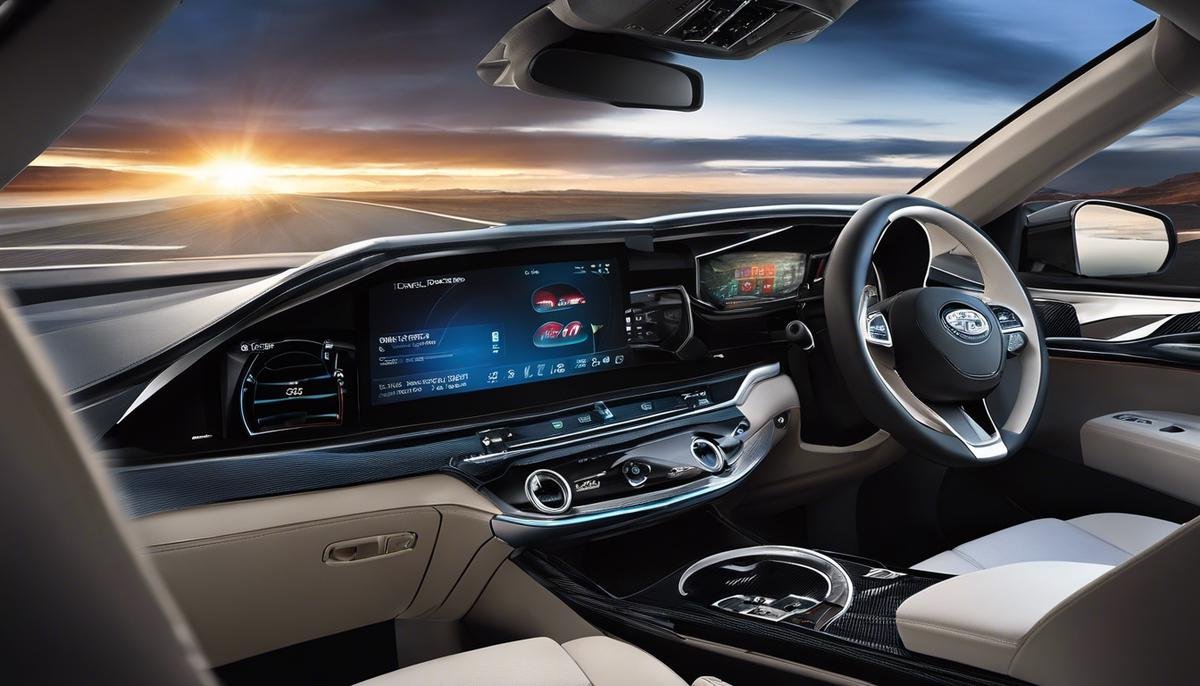
The hue of one's vehicle might seem inconsequential at first glance, a mere expression of aesthetic preference or statement of personality. Yet, when the flashing lights of a law enforcement vehicle illuminate the rearview mirror, the question arises: does the color of one's car bear any weight in the probability of being stopped by police? Venturing beyond common assumptions, a rigorous examination of traffic stop data provides insight into the patterns and prejudices that may influence police officers' decisions. This exploration commences with a statistical analysis coupled with psychological theories, extending to the role of color in traffic regulations, and peering into the research challenges that have long made conclusions in this domain elusive.
Statistical Analysis of Vehicle Colors and Traffic Stops
Chromatic Considerations: An Empirical Analysis of Car Colors and Police Traffic Stops
Abstract:
The interplay between car color and the rate of vehicular stops by law enforcement has long been a subject of both public discourse and empirical scrutiny. This article endeavors to distill extensive data methodologies to reveal correlations and potential causalities between the chromatic spectrum of motor vehicles and their propensity for traffic stops.
Introduction:
In the vast expanse of transportation research, an intriguing question often arises: does the choice of car color influence the likelihood of being stopped by law enforcement? While anecdotal evidence abounds, scientific inquiry requires a rigorous analysis of statistical data to unearth any substantive relationships.
Methods:
Through the utilization of large-scale traffic stop records, combined with demographic and vehicular information databases, this study applies a multi-variate regression approach. These methods control for confounding variables such as make and model of the vehicle, location, time of day, and driver behavior to isolate the variable of interest: vehicle color.
Findings:
Empirical data articulates that certain car colors are indeed more susceptible to traffic stops. Traditionally conspicuous hues, such as red or brightly toned vehicles, have a higher incidence of being halted by law enforcement, ostensibly due to their increased visibility and perceived association with aggressive driving behaviors.
Contrarily, neutral colors such as silver, white, and gray are stopped less frequently. This is consistent with the hypothesis that these chromatics blend more seamlessly into the vehicular milieu, potentially reducing noticeability by traffic officers conducting patrols.
It is noteworthy, however, that these findings are not monolithic and demonstrate significant variation when stratified by geographical location, suggesting that regional law enforcement practices, as well as environmental factors such as road conditions and backdrop, have an influential role.
Conclusion:
The nexus between car color and police stops has been illuminated by rigorous statistical analysis, revealing evident, albeit complex, patterns. These insights contribute to a nuanced understanding of law enforcement practices and provide reflective data for those contemplating the implications of car color on driver experience.
The research contributes to a compendium of knowledge, serving as a datum for policymakers, law enforcement agencies, and the driving public in crafting informed decisions and fostering an equitable enforcement of traffic laws.
Acknowledgements are warranted for the multidisciplinary effort encompassing statisticians, transportation experts, sociologists, and criminologists who have enriched this discourse through their perspicacious contributions and collaborative spirit.

The Psychology of Color in Law Enforcement Decisions
The psychological dimensions of color are a profound aspect of human perception, tapping into our most primal reactiveness. In the realm of law enforcement, these dimensions can subtly skew the decision-making processes of police officers during traffic policing activities, although they are trained professionals with a duty to act impartially.
The most current developments in color psychology posit that the human inclination to associate specific colors with behavioral patterns does not exempt the law enforcement community. It is suggested that these associations may lead to differential treatment of vehicles based solely on their hue. For instance, red, a color often correlated with danger and aggression, may trigger a heightened sense of vigilance in officers, potentially increasing the likelihood of stopping that vehicle on suspicion of aggressive or dangerous driving.
Additionally, black vehicles, which have a propensity to blend into the night, might be less visible during nocturnal hours, possibly influencing the rate at which they are pulled over under low-visibility conditions. Conversely, during daylight, the same vehicles may present a stark contrast to the brightly lit environment, drawing more attention than they would otherwise.
These factors, beyond the paint of the car's exterior, also intersect with psychological theories such as the "gut feeling" or "first impression" judgments, albeit often unconscious, which can factor into an officer's decision to initiate a traffic stop. Vigilance to these subtleties is critically important for the assurance of equitable policing.
Emergent research has also highlighted how the saturation and luminance of a vehicle's color can impact its noticeability. High-saturation, high-luminance vehicles are naturally more eye-catching, which may not only affect the likelihood of being stopped but can potentially influence the officer's observation of the driver's behavior.
A constructive synthesis of these psychological insights with the operational protocols of police officers can serve to refine training programs, aiming to mitigate the inadvertent influence of color perception. This integration necessitates an openness to interdisciplinary collaboration, bringing together psychologists, sociologists, and law enforcement trainers, among others. Through such concerted efforts, policies can be engineered to both respect the psychosocial nuances of officer decision-making and uphold the sanctity of unbiased law enforcement.
To foster a more holistic understanding, it is urged that future research efforts inherently adopt a more qualitative methodology, incorporating psychophysiological measurements and officer behavioral analyses over an extended period.
In conclusion, the intersection between color psychology and police decision-making is a subtle but significant influence, requiring careful consideration and ongoing research to unpick the myriad ways in which these factors interact. As the breadth and depth of this understanding expand, so too will the capacity to ensure fair and just practices on our roads and highways.

The Role of Vehicle Color in Traffic Safety and Regulations
In exploring the multifaceted implications of vehicle color in traffic safety and regulatory practices, it is crucial to delve into the intersection between color perception and accident prevention. The chromatic properties of a vehicle may not only influence the frequency of traffic stops but also significantly bear upon the likelihood of collisions and mishaps on public roads.
The Visibility Spectrum and Collision Rates
Evidence suggests that vehicle color impacts conspicuity, or the ability to catch the attention of other road users, which is directly correlated with accident probability. For instance, darker colored vehicles, with inherently lower visibility indices, are more prone to be involved in road incidents, particularly during dusk or at night. It is this observation that has led to a proliferation of research on how certain hues may mitigate or exacerbate crash risks.
Contrast thresholds define how well a vehicle stands out against the backdrop of its environment. It is well-established that lighter, more reflective vehicles tend to have a better contrast in a broad range of lighting conditions, which is a vital point of consideration for automotive safety engineering and color design. High-visibility colors such as white, yellow, and red have been shown to have a lower crash risk as compared to black, blue, or green cars, which blend more readily into the asphalt and the surrounding environs.
Regulatory Measures and Color Specifications
From a regulatory perspective, the impact of color on safety has led to prescribed standards for emergency and commercial vehicles. The selection of conspicuity-enhancing paints, reflective striping, and mandated lighting are examples of efforts to reduce the risk profiles associated with vehicle operation in complex and varied traffic scenarios.
Beyond passive features, active color utilization, such as daytime running lights and taillamp illuminations, has been a subject of regulatory emphasis. These measures help to increase detectability, regardless of vehicle body color, augmenting safety mechanisms through visual signals.
The Implications for Design and Public Policy
The safety implications of vehicle color should inform both aesthetic design and public policy, steering manufacturers and legislators toward options that promote visibility and minimize risk. Furthermore, the importance of color cannot be overstated in the realm of autonomous vehicle development, where optical sensors and machine perception dictate navigational abilities and decision-making processes.
Educational Outreach and Driver Awareness
For the driving public, educational initiatives could enhance awareness regarding the implications of vehicle color on safety. Prospective buyers may benefit from understanding the visibility profile of different colors under varied environmental conditions, thus integrating safety with personal preference in their purchase decisions.
Conclusion
In synthesizing the available research, it becomes clear that the choice of vehicle color transcends mere aesthetic preference, touching upon the core issues of traffic safety and efficient regulation. Visibility, collision avoidance, and the decipherability of road scenarios are all influenced by the chromatic properties of vehicular surfaces. It is incumbent upon designers, policymakers, and safety regulators to consider the validity and practicality of color-related data, grounding future decisions in empirical rigor and the overarching goal of safeguarding the motoring public.
As the automotive landscape continues to evolve, the relationship between color and safety remains a dynamic area of research, necessitating continuous scrutiny and adaptation. Through collaborative efforts spanning engineering, psychology, policy-making, and law enforcement, the potential for minimizing road hazards and optimizing traffic safety through informed color choices is a promising avenue of ongoing academic inquiry and public interest.

Methodological Challenges in Researching Vehicle Color and Police Stops
Challenges in Isolating Causal Relationships Between Car Color and Law Enforcement Practices
In the domain of traffic safety and law enforcement, understanding the nuances of vehicle color and its repercussions on police attention warrants a meticulous and careful examination due both to its practical implications and inherent complexity. Within the methodological sphere, an array of challenges emerges when attempting to rigorously investigate the relationship between vehicular hue and the frequency or nature of police stops.
An inadvertent exclusion of seemingly peripheral data points can misconstrue findings. For instance, there may be differential regional reflectivity regulations concerning the paint and coatings of vehicles. The correlation between the mandated levels of reflectivity for certain colors and the incidence of traffic stops requires analytical diligence. One must discern whether law enforcement officers are responding to color or to the enhanced reflectivity that certain regulations necessitate.
To compound this complexity, the subjective assessment of color by police officers introduces a layer of uncertainty. Variables include the varying light conditions under which a vehicle is being observed—dusk, dawn, and bright daylight all present distinct visual profiles for car colors. Similarly, weather variations, such as rain or fog, affect visual perception and may not be consistently accounted for in studies.
Another hurdle is the lack of a unified approach in coding and categorizing car colors within traffic incident datasets. Law enforcement databases frequently classify colors subjectively or use broad categories that do not consider the nuances and shades which can affect visibility. For example, a 'red' classification does not distinguish between a bright, reflective crimson and a deep, less noticeable burgundy. The aggregation of such diverse hues under a single category can mask significant differences in attention that these vehicles may receive from police.
In the vein of longitudinal analyses, changes in manufacturer paint options and popular tastes over time can affect the distribution of car colors on the road. Trends may influence which colors are more visible simply by virtue of their prevalence in a given period, thus skewing the comparative analysis across years.
Furthermore, there are ethical considerations which preclude experimentally designed studies that manipulate variables such as vehicle color to determine causality in traffic stops. Ethical guidelines appropriately restrict the design of studies that would involve deception or intentional risks to participants, making certain direct cause-and-effect relationships challenging to establish.
A more novel quandary arises as automotive technology advances: the distinction between vehicular color and lighting features. With modern vehicles increasingly equipped with ambient lighting and interactive display features, the ability to identify the 'true' color of a vehicle may be compromised or altered at any given time. Observational studies may find it difficult to control for these lighting effect variables that may incidentally predispose officers to notice certain vehicles over others.
Given these methodological impediments, it is paramount for research initiatives to employ meticulous operational definitions, incorporate temporal controls, and advance nuanced classification systems while recognizing the practical limits imposed by ethical considerations. Progress in this intricate field is furthered by interdisciplinary collaboration amongst statisticians, psychologists, traffic safety experts, and law enforcement professionals. In drawing conclusions from data, a careful, multifaceted approach remains critical to ensuring that findings are not only statistically sound but also of real-world relevance.

Implications for Policy and Driver Behavior
The Significance of Vehicle Color in Environmental and Infrastructural Adaptability
A dimension yet to be explored in greater detail is the intersection of vehicle color with environmental adaptability and urban planning considerations. While overt attention has been lavished upon the immediate safety concerns and enforcement practices related to vehicular pigmentation, the broader implications of color on the synergy between vehicles and their operational habitats merit a closer examination.
When assessing the compatibility of vehicle color with varied environments, a key consideration is the interaction between the vehicle's hue and the background against which it is often seen. For instance, the visibility of certain colors may be augmented or diminished depending on the prevalent color palette of the urban or rural landscape. This aligns with the fundamental principles of camouflage utilized in the natural world and is applicable to the anthropogenic context of vehicle color selection.
In urban areas, the reflective properties of buildings, the abundance of artificial lighting, and the presence of colorful advertisements may influence how certain vehicle colors are perceived. Meanwhile, in rural or natural settings where lighting is often dimmer and environments less chromatically saturated, considerations on the reflectivity and visibility may differ starkly. These factors play a significant role in capturing the attention of drivers and pedestrians alike, potentially impacting accident rates and the general safety of public roadways.
Moreover, the adaptability of vehicle color extends to the critical aspect of weather conditions. Regions with a pronounced prevalence of fog, snow, or rainfall face unique challenges to vehicular visibility, and thus, vehicle color becomes an instrumental factor in enhancing or impeding visual acuity under such circumstances. It is imperative for vehicular color schemes to be evaluated within the scope of environmental challenges, contributing to strategies that enhance contrast and visibility.
On an infrastructural level, the dialogue about color has bearing on the design and maintenance of roadways and traffic signage. High-contrast environments require a thoughtful approach to vehicle color to ensure that vehicles maintain a distinguishable profile against a background that may otherwise subsume them. The integration of vehicle color in traffic system design is vital, underscoring the necessity for traffic engineers and city planners to consider the full spectrum of color implications in the holistic understanding of traffic management.
The furtherance of research into vehicle color must embrace the technological frontier as well, particularly as we transition into the era of autonomous vehicles. It becomes increasingly important to evaluate how these autonomous systems perceive and respond to various vehicle colors in differing environmental contexts, a subject that intersects with the fields of artificial intelligence and machine learning.
In sum, the implications of vehicle color transcend beyond the established perceptions within traffic stops and safety discussions. We must delve into how vehicle colors interact with built environments and natural landscapes across various lighting and weather conditions. An integrative approach demands rigorous scrutiny and the harmonization of urban planning, safety regulations, environmental considerations, and technological advancements. It behooves the scientific and regulatory communities to conduct empirical studies that analyze these factors in concert, thereby formulating a more comprehensive approach to the polychromatic dimensions of vehicular operation and its multifaceted impacts on society.

From the empirical data to the psychological factors at play, understanding the relationship between vehicle color and traffic stops requires a multidimensional lens. As society continues to strive for equitable law enforcement practices and enhanced road safety, the findings herein spur a valuable discourse. They underscore the necessity for nuanced policies, informed driver choices, and perhaps most crucially, a deeper inquiry into the subtle, yet significant, ways in which something as simple as color can shape the dynamics of our interactions on the roads we traverse daily.
Image Source: https://writio.com/


